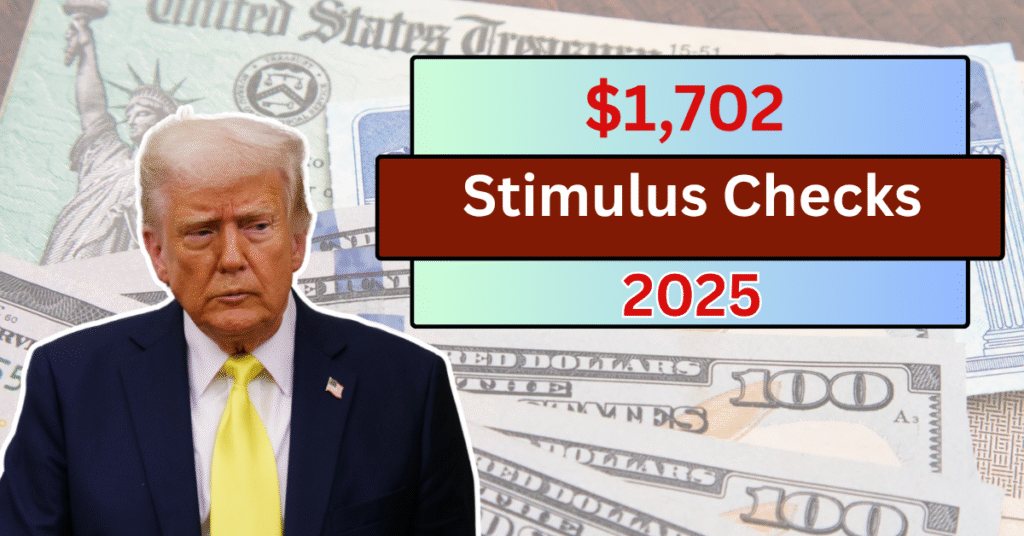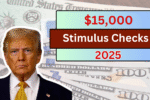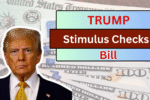As the May 2025 stimulus payments roll out, many Americans are eagerly anticipating their $1,702 payments. These payments are designed to help ease the financial burden caused by rising living costs and to provide support during ongoing economic challenges. For those wondering if they are eligible and when they will receive their payment, this article covers everything you need to know.
What is the $1,702 Stimulus Payment?
The $1,702 stimulus payment is a part of the government’s continued efforts to assist citizens, particularly those from low-income and middle-class households. These payments are a financial lifeline, helping individuals and families cover essential costs like rent, groceries, utilities, and other necessary expenses. It’s the latest in a series of relief measures aimed at helping people during challenging financial times.
For many, these stimulus checks are crucial as they try to keep up with rising costs, such as food, fuel, and healthcare. The payments are being distributed through direct deposit for those who have provided their bank account details, and checks will be mailed to those who don’t have direct deposit information on file.
Who Is Eligible for the $1,702 Payment?
Eligibility for the $1,702 stimulus payment is primarily based on your income level, tax filing status, and family size. The payment is targeted at individuals and families that meet certain income thresholds, designed to ensure that those who need help the most receive it.
Here are the key eligibility criteria for the $1,702 payment:
- Income Limits: Single taxpayers with an income up to $75,000 annually or married couples filing jointly with an income up to $150,000 are eligible to receive the full $1,702 payment. For individuals with higher incomes, the payment may be reduced, or they may not qualify at all.
- Dependents: Households with dependents may receive additional funds. For each qualifying dependent, households can expect to receive more money. The payment amount varies depending on the number of dependents.
- Tax Filing Status: Whether you file as single, head of household, or jointly with a spouse affects your eligibility. If you did not file taxes in 2023 or you don’t usually file due to low income, you may still be eligible for the payment. For example, the government may use other information, like data from the Social Security Administration or Veterans Affairs, to determine eligibility.
When Will the Payment Be Distributed?
The $1,702 stimulus payment is being sent out this week. If you’re eligible, the government will send the payment via the method you’ve provided, either through direct deposit or by a physical check in the mail.
Direct Deposit: For most people who have already filed taxes in the past and included their direct deposit information, the payment will be automatically deposited into your bank account. This is the fastest method, and the deposit should happen within a few business days.
Physical Checks: If you don’t have direct deposit information on file, or if the government does not have your updated bank details, you will receive a physical check in the mail. Keep an eye on your mailbox, as delivery of checks may take longer than direct deposits.
It’s important to check your bank account regularly if you are expecting a direct deposit, and watch for any letters or notices from the IRS in case you are receiving a check.
How Can You Check If You Are Eligible?
If you’re unsure whether you qualify for the $1,702 stimulus payment, there are a few ways to confirm. The simplest option is to use the IRS’s “Get My Payment” tool. This online tool allows you to check the status of your payment, including when it will be sent and whether the IRS has your correct bank account details for direct deposit.
To check your eligibility, you can also review your 2023 tax filing information. If you filed your taxes and your income falls within the specified thresholds, you’re likely to receive the payment. You can also check with your tax preparer or financial advisor for more details about your specific situation.
Additionally, if you are receiving government assistance through programs like Social Security or Veterans Affairs, the government may use that information to determine if you qualify for the stimulus payment.
What If You Haven’t Received Your Payment Yet?
If you meet the eligibility criteria but haven’t received your $1,702 payment yet, there may be a few reasons why. Here are the most common situations that could cause delays:
- Incorrect or Missing Information: If you didn’t provide your correct bank account details for direct deposit, the payment will be delayed, and you may have to wait for a physical check in the mail.
- Tax Filing Issues: If you haven’t filed your taxes for 2023 or filed them incorrectly, this may delay your payment.
- Mail Delivery Delays: If you’re expecting a physical check, be aware that mail delivery times can vary, especially if there are issues with the postal system.
- Eligibility Verification: In some cases, the IRS may take extra time to verify eligibility for the payment, especially for individuals who haven’t filed taxes or those receiving benefits through other government programs.
If you haven’t received your payment and believe you should have, you can use the IRS’s online tools to check the status or follow up with their help center for assistance. In some cases, you may need to file a payment trace if the payment was sent but never received.
What to Do If You Don’t Qualify for the $1,702 Payment
If you find out that you do not qualify for the $1,702 stimulus payment, it’s essential not to panic. While you may not receive this particular round of financial relief, there are still other forms of government assistance that may be available to you, including the Earned Income Tax Credit (EITC), Temporary Assistance for Needy Families (TANF), or Supplemental Nutrition Assistance Program (SNAP).
Additionally, if your financial situation has changed since you last filed taxes, you may qualify for other relief measures or a larger refund when you file your 2024 taxes. Keep an eye out for future stimulus payments or other forms of financial aid, as the government is likely to continue offering support as needed.
Why Is the $1,702 Stimulus Payment Important?
The $1,702 stimulus payment is a crucial source of relief for many households. With inflation causing prices to rise across the country, these payments provide families with much-needed financial help. Whether it’s covering rent, utilities, groceries, or medical bills, this payment can make a significant difference for people who are struggling to make ends meet.
For some, this payment may be enough to cover some of the essentials and alleviate some of the financial pressure they’re facing. Others may use it to pay down debt or build up their savings in preparation for future financial challenges.
Conclusion
The $1,702 stimulus payment is a vital resource for eligible individuals and families. Whether you qualify for the full payment or a reduced amount, these funds are designed to help ease the financial strain caused by rising living costs. If you haven’t received your payment yet, be sure to check your eligibility and track its status through the IRS website or by following up with your bank.
As we continue to navigate these economic times, it’s important to stay informed about government relief programs and take advantage of any available financial assistance.




